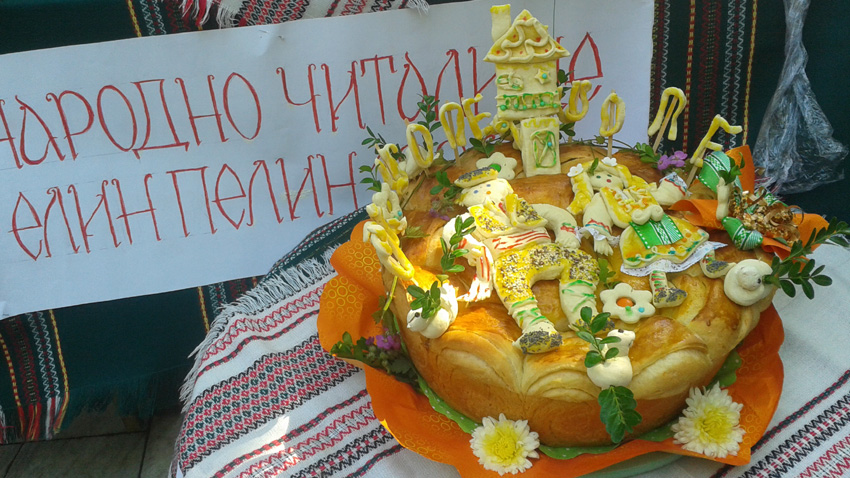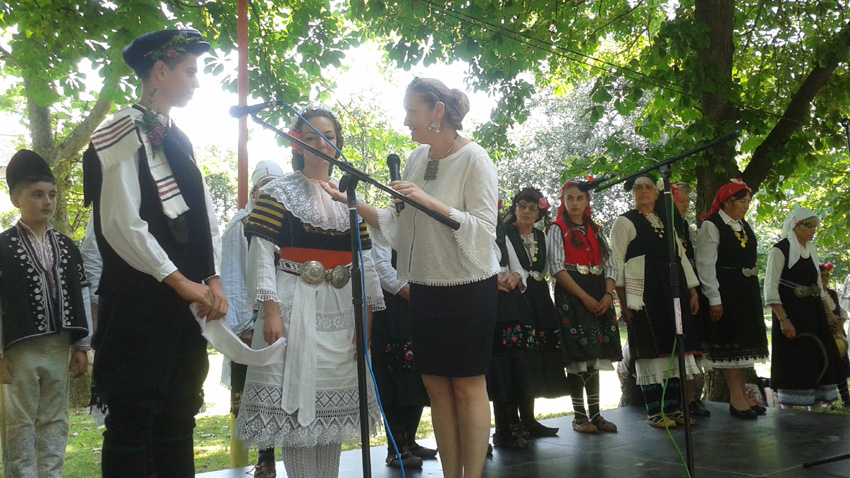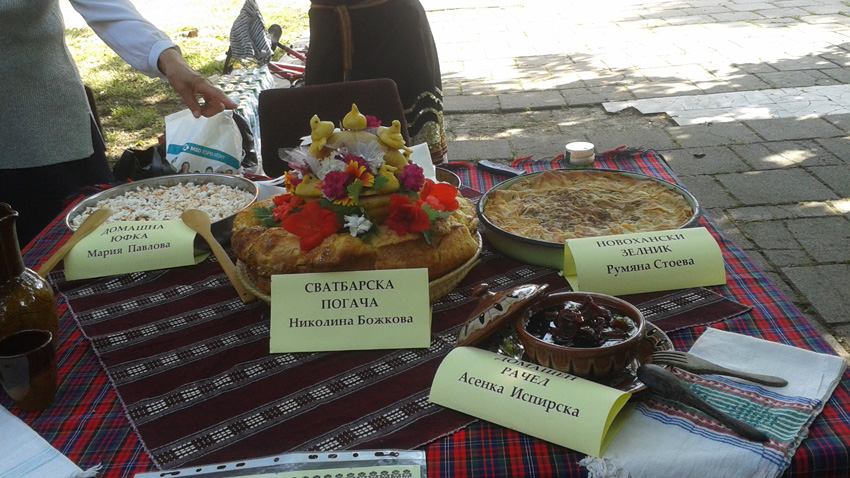A big festival is organized in June every year in Elin Pelin offering an insight into the way of life, folklore, cooking and humour of the Shoppe region (the area around Sofia). Dozens of amateur performers come for the event from the villages Mousachevo, Grigorevo, Garba, Ognyanovo, Ravno Pole and many others scattered in the valley around Sofia. The Shoppe festival in Elin Pelin starts on Pentecost and stretches over one week with meetings, working bees, singing contests, lots of Shoppe humour and delicious local food.

But what really brought the crowds in was the pageant of authentic traditional clothes with the “Shoppe cooking” gastronomy exhibition as a sideline. Pinafores, shirts, scarves, belts and necklaces were taken out of “granny’s coffers”, some more than 100 years old. Women, young girls and boys demonstrated traditional costumes the likes of which cannot be seen even in museum collections. All eyes were on the festive costume from Mousachevo village. “Everything you see is hand woven, knitted and braided,” says the woman from Mousachevo who presented the costume.

“This is a black pinafore with white braiding, a white cotton shirt, laced at the sleeves, the necklace is made of silver coins and there is an ornate belt buckle. On my feet I am wearing black woolen stockings with bright-coloured threads and tsurvouli. The scarf on my head is called kurshenitsa and is made out of home-woven cloth, it is decorated with embroidery and beads. We have here man’s clothing from the Shoppe region – a white embroidered shirt, a braided black sleeveless jacket and a red woolen waist sash the shirt is tucked into. On the feet there are pigskin tsurvouli, and on the head – a lambskin hat.”
It proved impossible to choose from among all of these traditional items of clothing, they are all so original, so invaluable. The jury distinguished each one of the traditional costumes presented. Folk singer Iliyana Naydenova has travelled the country extensively in search of authentic clothes for the stage. She was really impressed by the Shoppe “fashion show”:

“I was really thrilled to see the authentic Mousachevo costumes. I have been on the lookout for clothes from the region of Elin Pelin for a long time. They are really valuable because even museums don’t have them in their collections. I was glad to have been able to see the clothes worn by unmarried girls – I have been having arguments with other folk singers who say that it is only in the region of Ihtiman that there are beads like that on the pinafore; now I am sure they have them in Elin Pelin as well. The embroidery on clothing in Elin Pelin is called “roses” it is very, very old and can only be seen on Sunday clothes, not on the clothes one wears ordinarily. The Elin Pelin shirt is amazing – it is very rare with beautiful lacing. The fact that there is no lace on one of the sleeves goes to show that it was made as dowry and was never finished off. Three rows of colour embroidery on a shirt is a very rare thing. I am happy to have seen such embroidery here, in Elin Pelin.”

Now to the gastronomy exhibition. It was the “Shoppe cooking” contest that kept people coming. There was home-baked bread and banitsa, hominy and the thickrachel or pumpkin jam Asenka Ispirska from Novi Han village makes. Here is her recipe, handed down from generation to generation.
“You need grape juice to keep the pumpkin in for ten hours. Boil ten litres of grape juice, until it thickens leaving 5-6 litres. Cut the pumpkin up into cubes the size of sugar cubes. Leave them in water with dissolved lime in it for two hours and then pour onto the grape juice and boil for one more hour. Pour the mixture obtained into jars, stop them up and turn them upside down, then wrap a towel around them. Keep in a cool place – in the cellar for example. And when you screw the cap off the jars, the pieces of pumpkin will be fresh and crispy even though there is not one gram of sugar or preservatives.”
Photos: Gergana Mancheva
English version: Milena Daynova
The Philip Koutev National School of Folk Arts is not just any school - it is a talent laboratory. It is the first school not only in Bulgaria but in the Balkans for professional study of folklore. It is located in the heart of the beautiful town of..
Scientists from the Sorbonne will study the cultural heritage preserved in the Regional Ethnographic Open-Air Museum "Etar" , informs public broadcaster BNT. In March this year the French scientists together with experts of REOM "Etar" will study elements..
The day of St. Tryphon (1 February old style, 14 February new style) is celebrated by vine growers, falconers and gardeners in Bulgaria. Trifon Zarezan comes around with vine pruning and wine drinking St. Tryphon is believed to help..

+359 2 9336 661
